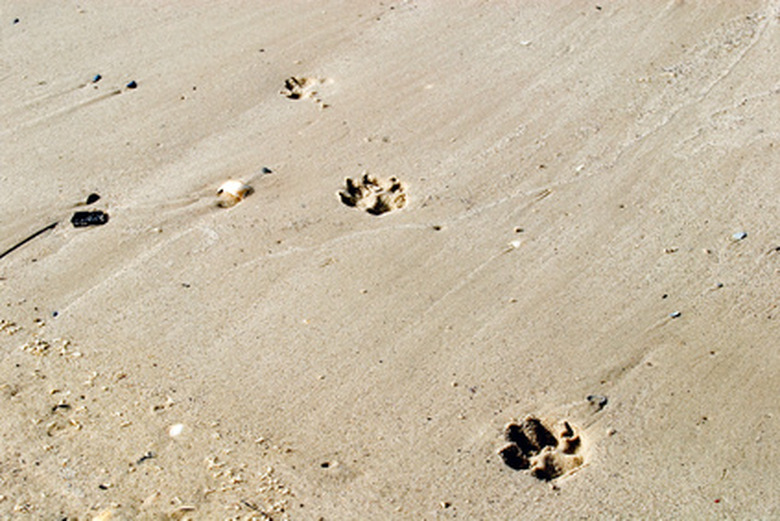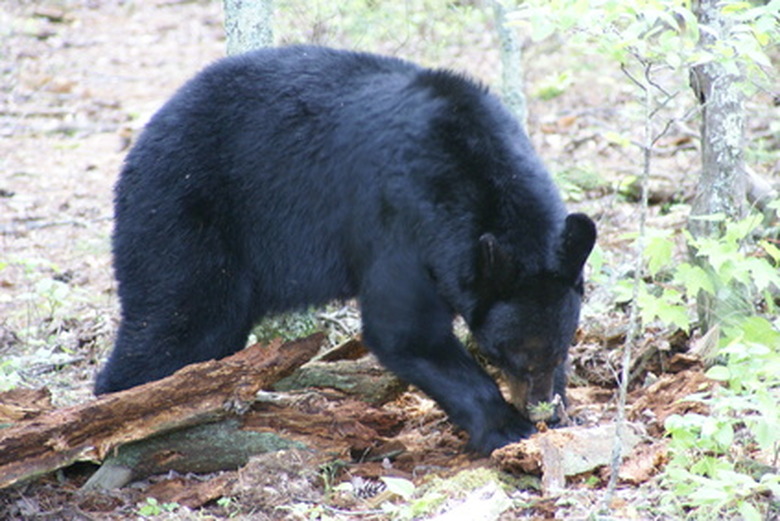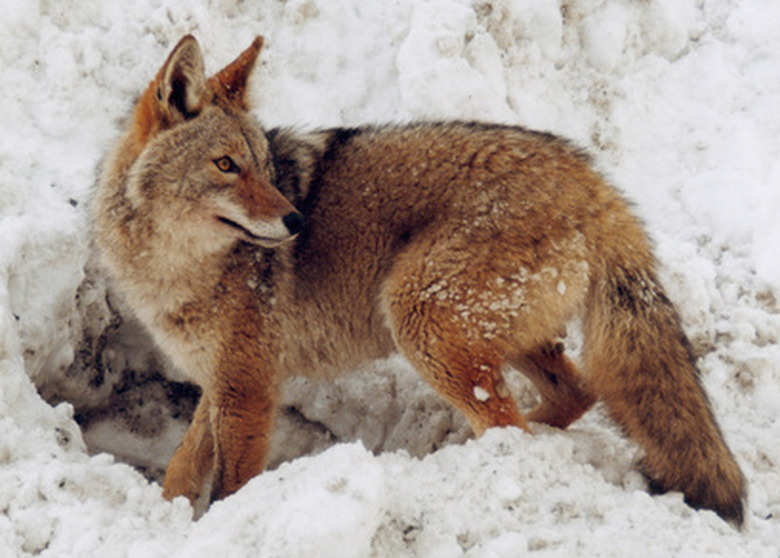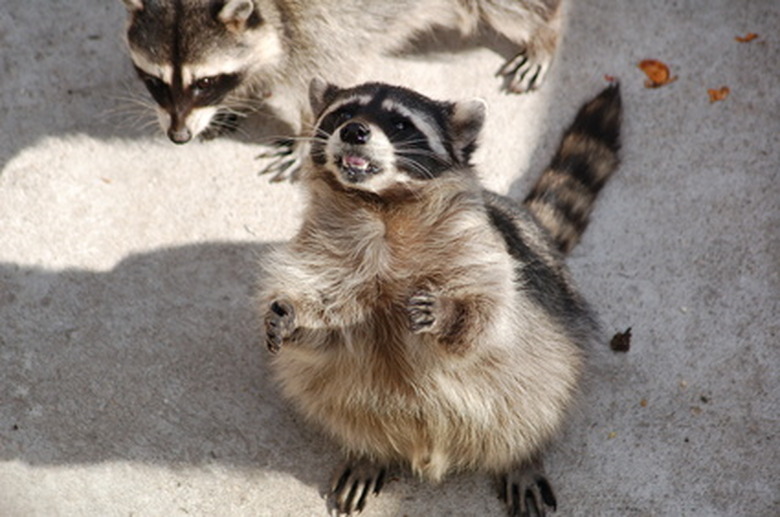How To Identify Animal Tracks In Pennsylvania
Identifying Pennsylvania animal tracks requires knowing what species may be present and their track details. Species have their own track characteristics, but tracks of related animals can be very similar. For example, distinguishing tracks of coyotes and dogs is difficult. Knowing distinctions to watch for aids identification. For accurate details, take an animal tracks field guide along on your outing. Pennsylvania's wildlife is diverse. Track identification is an interesting way to learn more about it.
Step 1
Count the number of toes visible in the track. Black bears have five toes on each foot, coyotes show four and raccoons have five. Notice if claws are visible. Canine species show claws, cat species do not. Some toes may not register in different materials. For example, a bear track may only show four toes in hardened mud, but all five in soft mud or the snow during late winter in Pennsylvania. This is when they start to emerge from their dormant winter stage, although they may come out on warmer winter days to forage. Deer possess two toes which are oblong shape, round at the bottom and slightly pointed at the top. They are close together although completely separated through the middle. Opossums have five toes on each foot with a distinct opposable thumb on the hind feet. Elk tracks are very similar to the white-tailed deer, except larger.
Step 2
Measure the tracks with the tape measure. Different species have different size feet at adulthood. Take note that gender and age may leave different size tracks. Many of Pennsylvania's wildlife gives birth during late spring and summer. Tracks left by young animals look identical to their parents' tracks but much smaller. You will often see them near adult tracks.
A black bear's front foot is about 3 1/2 inches wide, while the hind foot is oblong at 7 inches long by 3 1/2 inches wide. Baby bears in Pennsylvania are born in January but leave the den in early- to mid-spring, leaving much smaller tracks in the snow or mud. Coyotes have larger front feet than back feet, and closely resemble those of a domestic dog despite being more oval shaped. Adult raccoon tracks are, on average, 2 1/4 inches long in the front and 3 1/8 inches long in the back. They have very long, slender toes.
Step 3
Take into account the area you are in. Some wildlife species are more common in some areas of the state than in others. Black bears, for example, are more common throughout the Appalachian Mountains and undisturbed woodlands of the state. Black bears in Pennsylvania are not likely to inhabit agricultural or highly developed areas. Elk are present in the state. As of the late 2000s, elk populations have spread to a larger range within the state than they occupied during the previous 100 years, according to the Pennsylvania Game Commission. Coyotes may live anywhere, although wilderness is preferred. Raccoons and opossums may live in your yard or in the forest. Knowing where to search for the tracks or how the animals normally travel assists in identifying the tracks.
Things Needed
- Ruler or tape measure
- Animal tracks field guide (optional)
TL;DR (Too Long; Didn't Read)
You can preserve tracks by using plaster, although this is best done with well-defined tracks in a slightly hardened mud or other material. Using a detailed field guide will ease the process of identifying the tracks. Field guides are written and organized in such a way that the reader can quickly find needed species habitat and behavior information, range maps, and photos or drawings of the tracks.
Warning
If you see tracks, wildlife is present. Always be prepared for wildlife encounters.
Cite This Article
MLA
Kelly, Jasey. "How To Identify Animal Tracks In Pennsylvania" sciencing.com, https://www.sciencing.com/identify-animal-tracks-pennsylvania-6750580/. 22 November 2019.
APA
Kelly, Jasey. (2019, November 22). How To Identify Animal Tracks In Pennsylvania. sciencing.com. Retrieved from https://www.sciencing.com/identify-animal-tracks-pennsylvania-6750580/
Chicago
Kelly, Jasey. How To Identify Animal Tracks In Pennsylvania last modified March 24, 2022. https://www.sciencing.com/identify-animal-tracks-pennsylvania-6750580/



